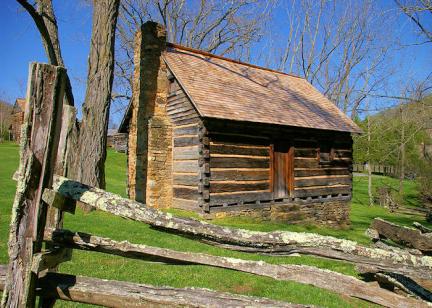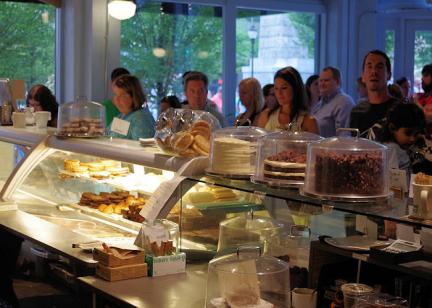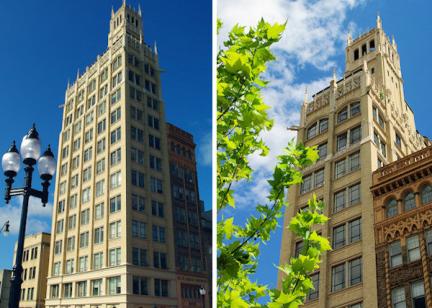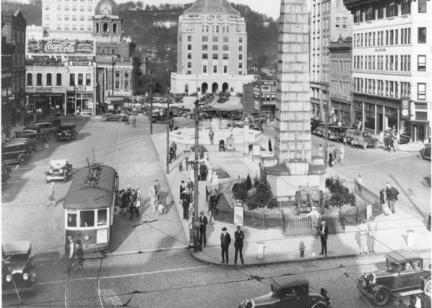Win a Downtown Asheville Stay + VIP Event Tickets
Asheville Black Cultural Heritage Trail
If you want to learn how Black residents have been essential to arts, culture, and commerce in Asheville and Western North Carolina for more than 160 years, walk Asheville's Black Cultural Heritage Trail. This self-guided walking tour through the streets of Downtown, Southside, and the River area of Asheville has 16 stops. It features local luminaries and unsung heroes who built the city and made it feel like home. An audio component allows you to listen to narrations of each trail marker—just scan the QR code that is located on each trail marker.
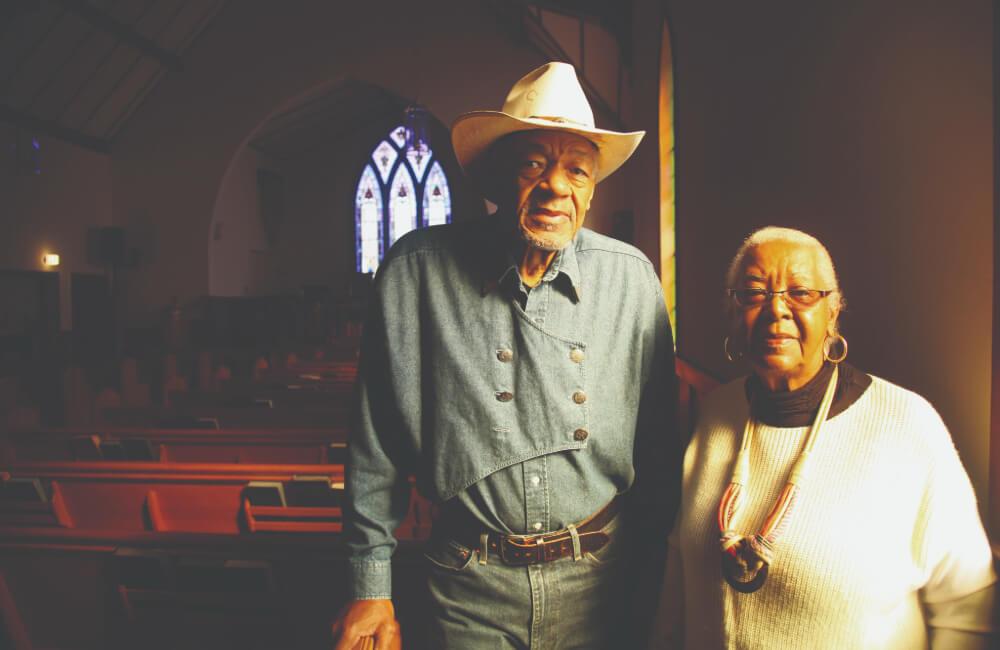
Marcell Proctor and Catherine Mitchell, co-founders of the trail, President and Executive Director of River Front Development Group. Photo courtesy of Will Hornaday and courtesy of the Preservation Society of Asheville and Buncombe County.
Logistics
The trail itself covers one mile. It is split into three sections of 1/4 mile to 1/2 mile each. Each section requires 10 to 15 minutes of walking on sidewalks. You can tackle one section at a time and easily fit in visits to nearby restaurants, breweries, galleries, pickleball, and more. If you want to visit all three sections in one day we recommend using a bike or car. See our map, stops, and insider tips section for details.
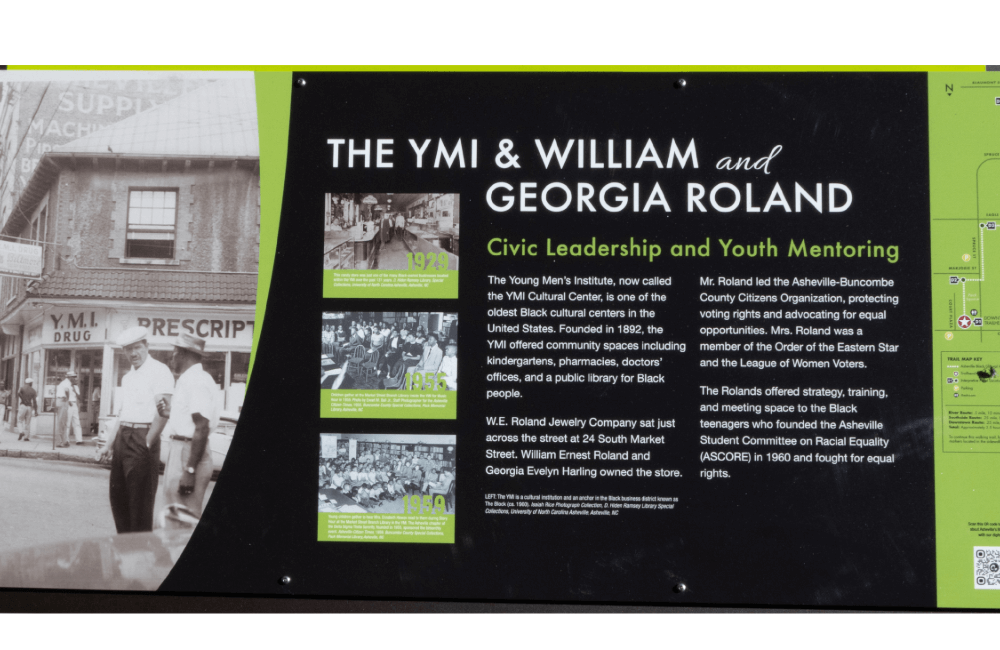
Black Cultural Heritage Trail marker. Photo courtesy of River Front Development Group.
What to Expect
The Black Cultural Heritage Trail "demonstrates that despite the destruction and displacement of urban renewal, the contributions of Black Ashevillans endure." It gives you an insider's take on Asheville as you meander through three distinct and vibrant parts of the city. Learn about the Castle on the Hill, the fresh-air cure, what it took to connect Asheville to the world by rail, and a man who refused to give up his seat on a bus several years before Rosa Parks did.
History
Asheville Black Cultural Heritage Trail is a community collaboration. The trail was founded by River Front Development Group, a local nonprofit community development organization. Residents of the historic Black neighborhood East End/Valley Street and dozens of volunteer members of an advisory committee shepherded the trail from idea to completion. The county destination marketing organization, Explore Asheville, funded the project.
Sections and Stops on the Trail
Here is a map, a list of stops, and insider tips on parking:
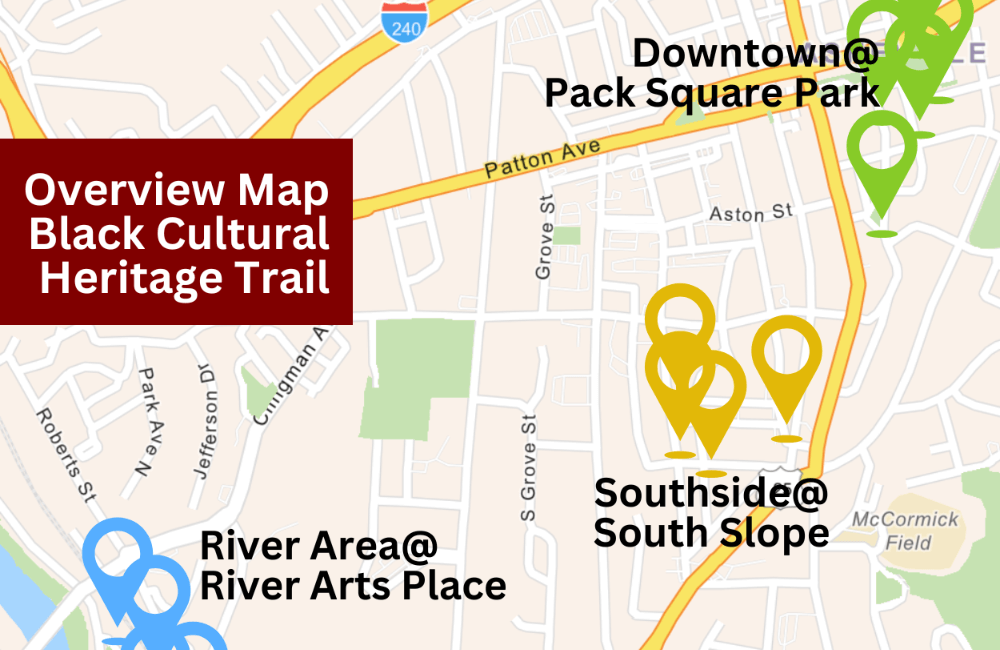
Downtown (Park Square through The Block)
Insider's tip: The College Street Public Parking Garage is open 24/7 and has EV chargers. There are breweries, restaurants, art galleries, bars, and more along this section of the trail. Cross College Street and enter Pack Square Park to begin the trail.
1. Asheville Elects Freedman Newton Shepard: 1892 & 1893. Learn about the first Black city council member and the reconstruction era in Asheville in beautiful Pack Square Park.
2. Graduates of the Allen School: Advancing Civil Rights, Arts, and Science. This marker features Nina Simone, Christine Darden, and local luminaries from this celebrated school.
3. Stephens-Lee High School Educates Legends and Heroes: 1923–1965. Learn about Western North Carolina's premier high school for Black students and its world-famous graduates. Take in a view of The Castle on the Hill.
4. Historical Black Churches in Asheville: 1832-1898. See vintage photos of church life and read about the role of churches in expanding civil rights and educational opportunities.
5. The YMI & W.E. and Georgia Roland: Civic Leadership and Youth Mentoring. Asheville is home to one of the oldest Black cultural centers in the country, located on The Block.
6. Isaac Dickson and the Historic East End Neighborhood. Step back into the past and see how much this neighborhood has changed since the 1860s.
Southside (newcomers call this area the South Slope)
Insider's tip: The Coxe Avenue/Sears Alley Public Parking Deck is open 24/7 and has EV chargers. Walk downhill to reach the trail stops in this section. There are breweries, restaurants, bars, art galleries, and more along this section of the trail.
1. Black Doctors, Nurses, and Hospitals. Learn how tuberculosis spurred Asheville's growth and how Black residents rallied to provide medical care to one another during segregation. Located on the grounds of a former Black hospital.
2. Robert McMorris and Wendell Charles Blair, Sr.: Mechanics and Pillars of the Community. This marker celebrates everyday people who went the extra mile to foster community and support one another while overcoming the pressures of urban renewal.
3. The Legacy of E.W. and Annis Pearson in Asheville. This couple founded Asheville’s first Black semi-professional baseball team and the region's biggest agricultural fair, both located just south of this marker.
4. Black Women Fund Advocacy, Housing, and Education. Never underestimate the power of a small group of committed people to change the world! Learn about the first Black-lead YWCA in the South and more.
5. The National Housing Act of 1934: Urban Renewal in Asheville. This marker explains how the East Riverside Urban Renewal Project in Asheville targeted the Black-majority Southside neighborhood.
River Area (newcomers call this the River Arts District)
Insider's tip: Parking is free in this area. The parking lot on River Arts Place is near the first stop in this section. There are breweries, restaurants, bars, art galleries, and more along this section of the trail.
1. The Flood of 1916 and Matthew Bacoate, Jr., Integrator and Entrepreneur. Learn about this city's worst flood and Asheville native Matthew Bacoate, Jr., who operated the first Black-owned manufacturing companies in Western North Carolina. See the high water mark and the historic AFRAM building.
2. Asheville’s Black Newspapers: From the Colored Enterprise to The Urban News. Learn the history of Black-owned newspapers and Black journalists and see vintage photos of newsrooms.
3. Unsung Builders of the Swannanoa Tunnel. This marker gives an unflinching look at how the 13th Amendment to the U.S. Constitution created involuntary servitude. Learn how incarcerated Black men and women built the Swannanoa Tunnel that connected Asheville to the rest of the U.S.
4. America's First Black Union Represents Ashevillians. In the heart of Depot Street, read about The Brotherhood of Sleeping Car Porters and Maids and its impact on Asheville's Southside neighborhood.
5. William R. “Seabron” Saxon: Civil Rights Advocate. Mr. Saxon refused to give up his seat on a bus years before Rosa Parks.
17. Asheville’s Southside: 1920s-1960s. Steps from the historic James-Keys Hotel ballroom where Billie Holiday, James Brown, and Aretha Franklin performed, learn why Southside was the place to be for generations.
